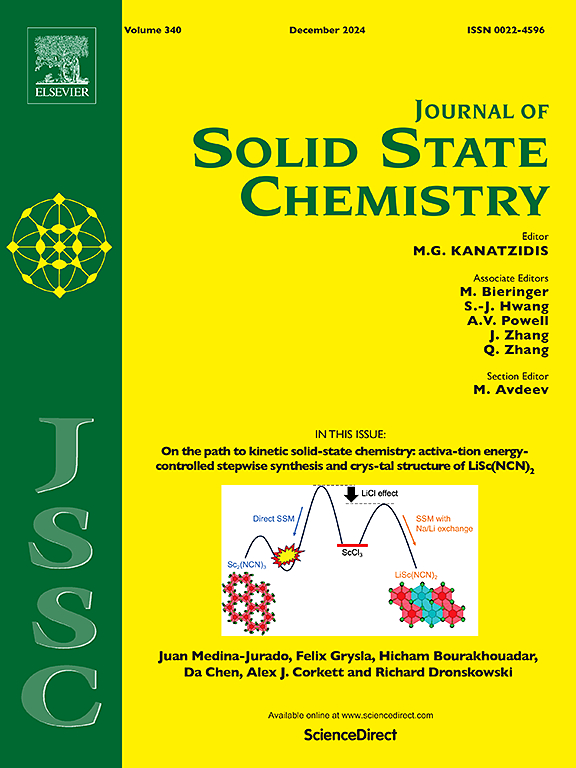Facile synthesis of MnO2@Ti3C2Tx composite electrodes for superior performance supercapacitor
IF 3.2
3区 化学
Q2 CHEMISTRY, INORGANIC & NUCLEAR
引用次数: 0
Abstract
Supercapacitors are gaining traction in the energy storage sector due to their high power and energy density. MnO2 is identified as a promising supercapacitors electrode material due to its reversible Faraday reaction and great theoretical specific capacitance. However, its practical performance is hindered by poor electrical conductivity and structural instability. By incorporating Ti3C2Tx, a 2D MXene material known for its high conductivity and functional groups, the electrochemical behavior of the MnO2 composite is expected to be enhanced. This study introduces a novel method for synthesizing MnO2@Ti3C2Tx self-assembled electrodes (1, 3, 6, 9-MnO2@Ti3C2Tx composite electrodes) via a simple solution immersion technique at room temperature and ambient pressure. The state of manganese dioxide deposition can be influenced by varying the number of operations of the solution immersion technique. Among them, 6-MnO2@Ti3C2Tx has the largest specific surface area and achieves the best specific capacitance of 324.1 F g−1. When the current density is increased to 10 A g−1, the specific capacitance retention of 6-MnO2@Ti3C2Tx is 67.11 %. Furthermore, the 6-MnO2@Ti3C2Tx//Ti3C2Tx asymmetric capacitor demonstrated a maximum energy density of 30.8 W h kg−1 and a power density of 7493.3 W kg−1, maintaining a capacitance retention rate of 95.98 % (from 74.6 to 71.6F g−1) after 2000 charge-discharge cycles. This study presents an effective and scalable synthesis strategy for MnO2 composite electrodes, highlighting their potential for future energy storage applications.

求助全文
约1分钟内获得全文
求助全文
来源期刊

Journal of Solid State Chemistry
化学-无机化学与核化学
CiteScore
6.00
自引率
9.10%
发文量
848
审稿时长
25 days
期刊介绍:
Covering major developments in the field of solid state chemistry and related areas such as ceramics and amorphous materials, the Journal of Solid State Chemistry features studies of chemical, structural, thermodynamic, electronic, magnetic, and optical properties and processes in solids.
文献相关原料
公司名称
产品信息
阿拉丁
Potassium permanganate
阿拉丁
Titanium aluminum carbide
阿拉丁
Manganese acetate
阿拉丁
Anhydrous ethanol
阿拉丁
Hydrochloric acid
阿拉丁
Hexadecyltrimethylammonium bromide
 求助内容:
求助内容: 应助结果提醒方式:
应助结果提醒方式:


